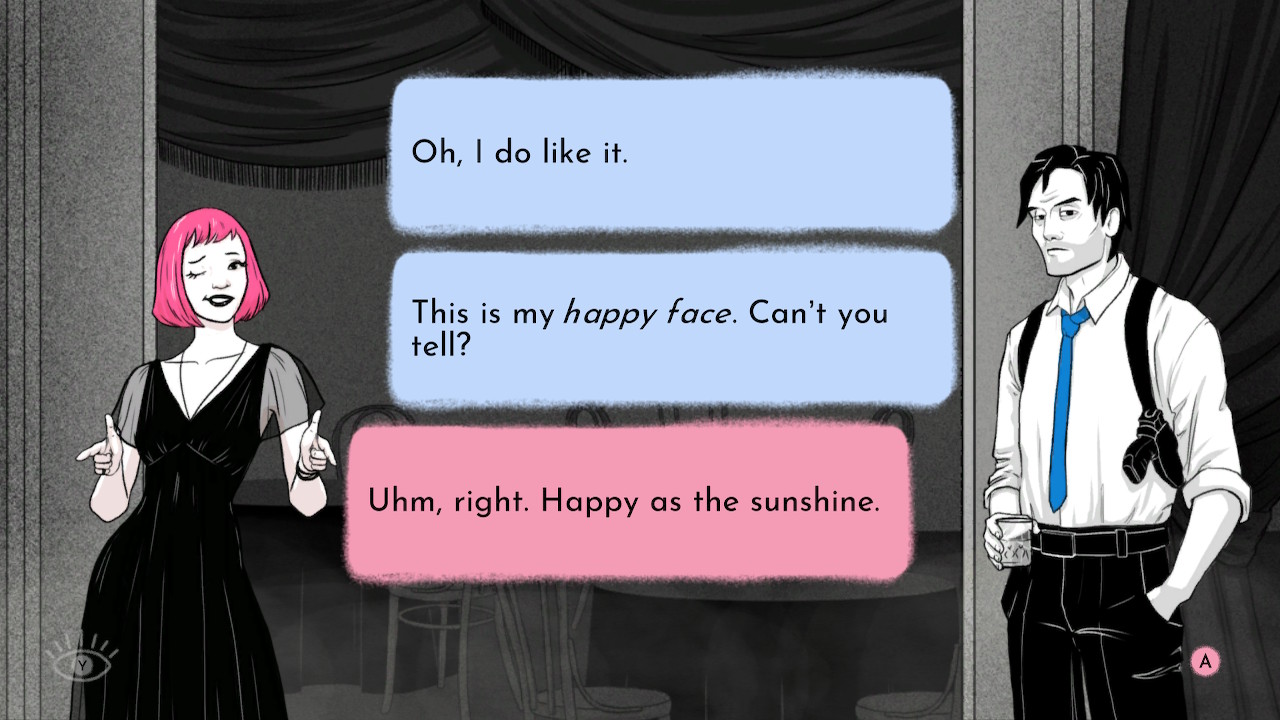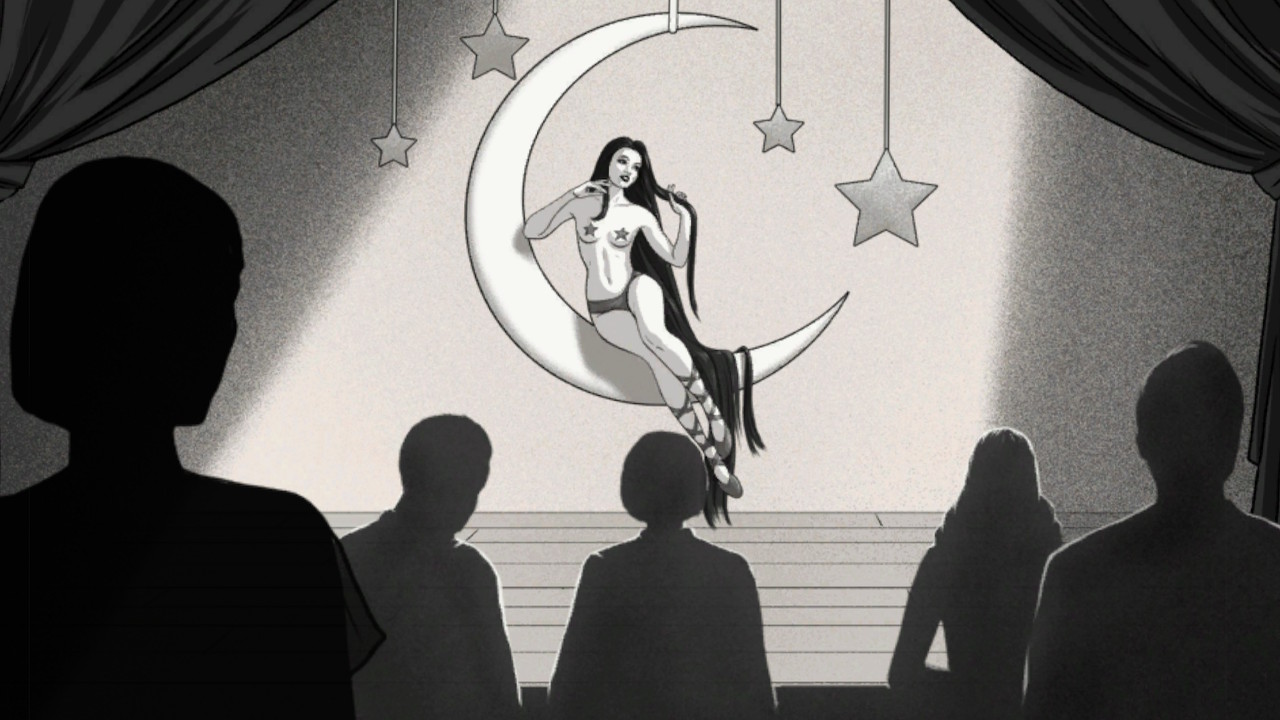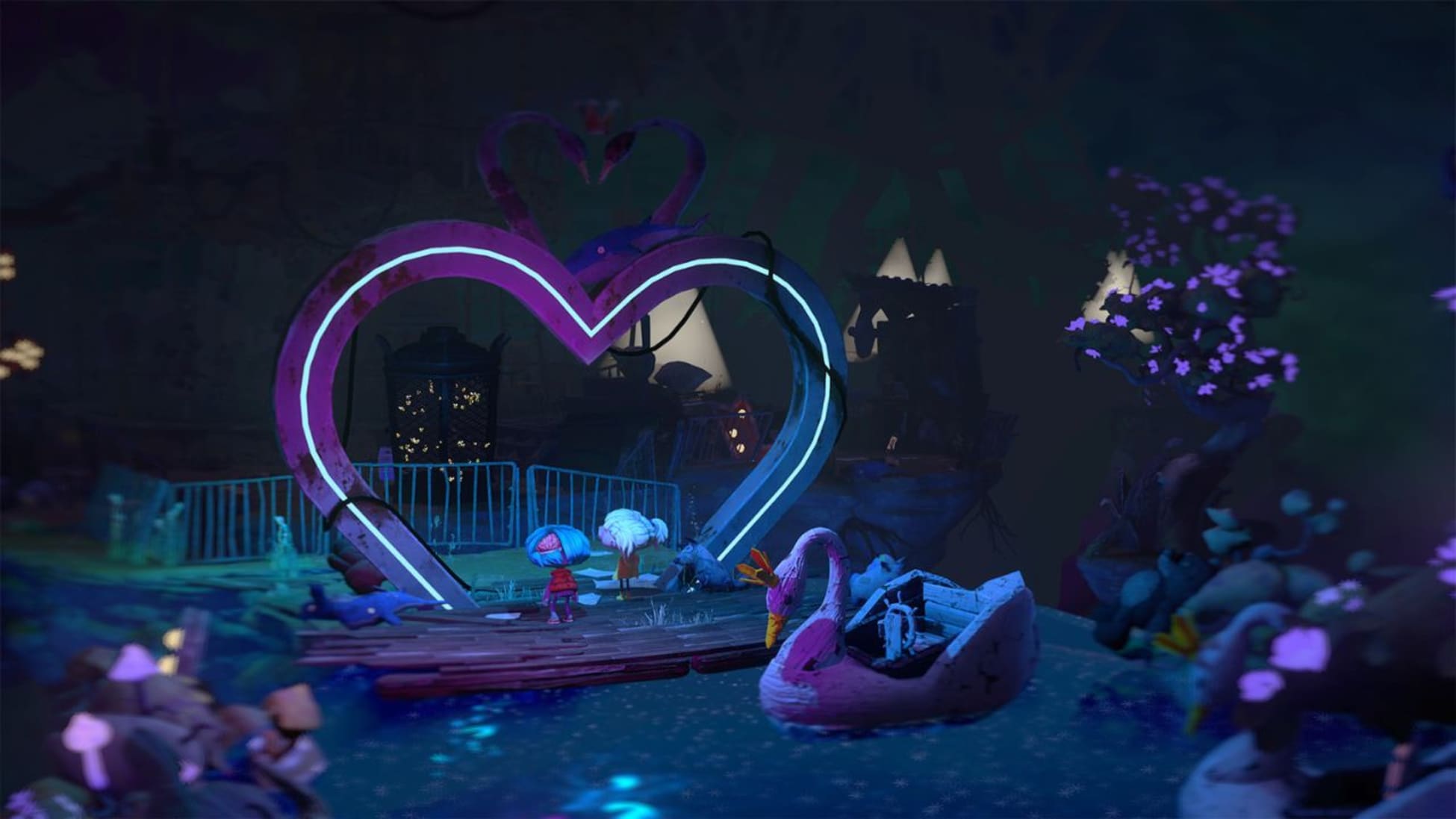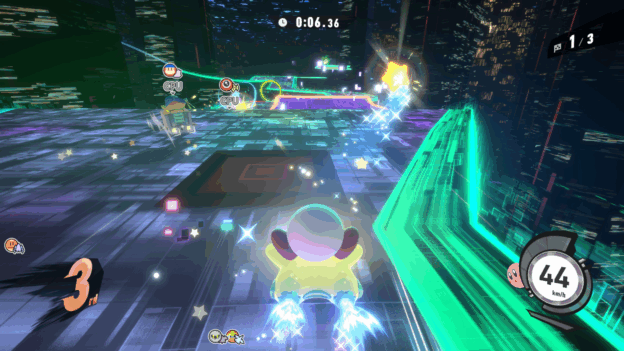Review: One Night Burlesque (Nintendo Switch)

A burlesque dancer struggling to keep it together has a wild night where a murder takes place at her club, forcing her to play amateur sleuth before her friend is gunned down. Also, she has a mental condition where, if she doesn’t take her medication, she has visions of the future and can read the minds of others.
I know, I know… “Another one of these games?”
Man, I love indie games. I love that there are people out there who will take an idea no one else has ever had, and put it out on a system people use for saving princesses and fighting robots. I especially admire the way they take a lack of resources, or a deliberately clunky interface, and creatively turn that into an asset with visual panache and an unusual vision. And One Night Burlesque has that in spades.
It’s a short game. You can finish it in a couple of hours. Also, it’s not much of a game; it’s fueled mostly by dialogue as you interrogate potential suspects, and there’s barely any element of chance in interactive parts.
But it’s done in such a weird way I couldn’t help being compelled by it.
One Night Burlesque is told in a series of still frames that are lightly animated; the camera will move over a close up of a dancer to indicate movement, and characters will abruptly change their posture to indicate a change in mood. Text will appear abruptly, often as a character’s intrusive thoughts, and visual effects like color separation are used to indicate mental states. It all reminds me of something you’d see on MTV’s Liquid Television; low budget, but interesting.
It’s tempting to call One Night Burlesque a visual novel, though it’s strikingly different from many games of that genre. Your choices don’t change the story much (though they will have an impact), and no matter how you question everyone, it won’t change the path of the tale, just how you perceive it.
As for the bits that are interactive, they’re mostly made of awkward interactions (intentional, I assume) with the world: shaking a pill bottle, making a cocktail, trying to get a pill in your mouth.
The other big one is when you use your psychic abilities (or psychotic breaks, depending on how you want to read the story) to read the minds of others. You’ll get flashes of their agitation, their memories, done in a very Lynchian style that fits in with both their emotional state and the protagonist’s crumbling sense of reality.
The line art illustrations are simple but evocative, something like a ’60s Playboy illustration—slightly naughty rather than erotic.
One aspect I really want to call out is the music and sound design. Combined with the way scenes are edited, they give every sudden reveal, every emotional breakdown, a deeper impact.
It’s blunt force, but it’s also—like the game itself—effective.







